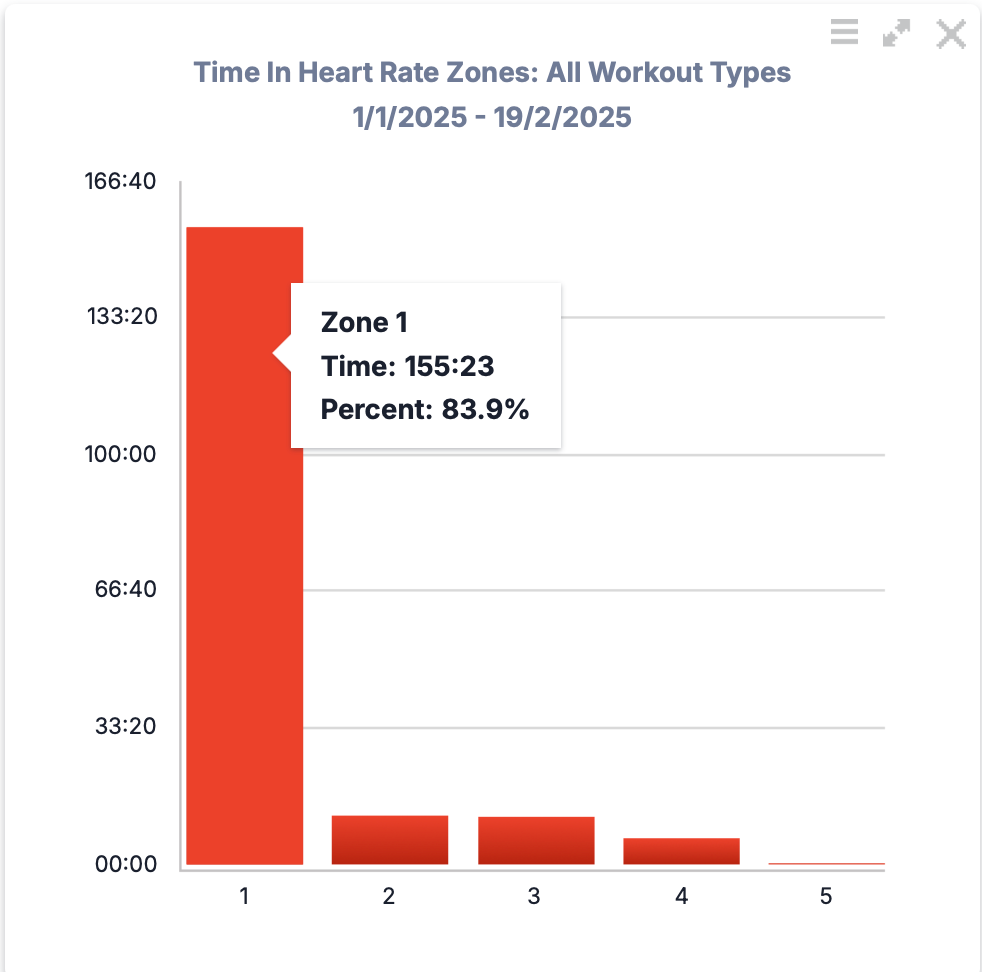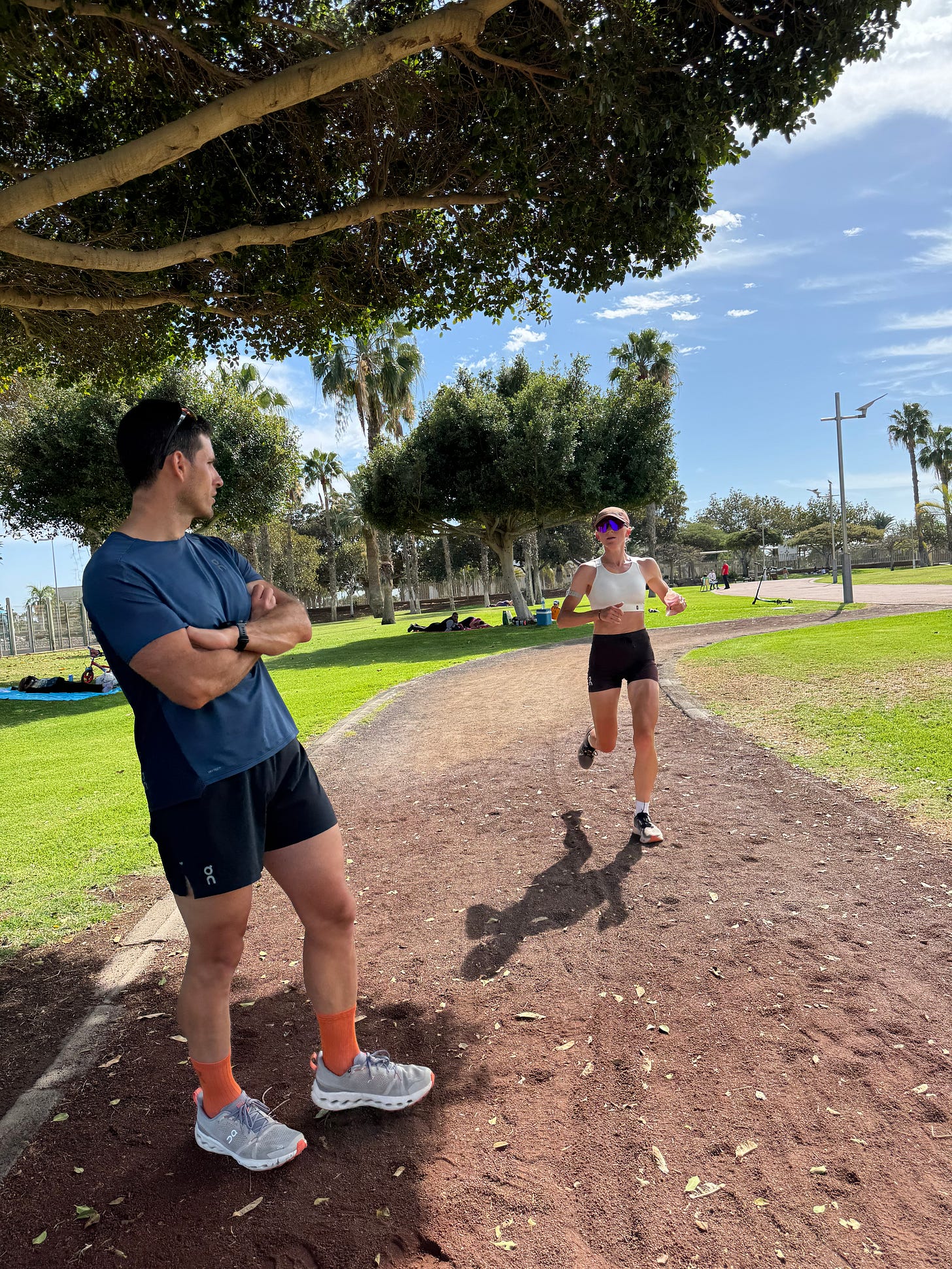Understanding LT1: The First Metabolic Threshold
"Master LT1—learn to go slow now, so you can go fast when it counts." — Iñaki de la Parra
As we wrap up our long training camp, I’ve received a flood of messages from people asking about the super high-volume work we’ve been doing with the crew.
But here’s the thing—they’re missing the point entirely.
The key that most people overlook: 80-90% of the training volume is done at sub-LT1 intensities.
LT1, or the first lactate threshold, is a fundamental concept in endurance training, yet it’s often misunderstood or overcomplicated. Let’s break it down and see why staying below LT1 is one of the most powerful tools for long-term performance.
Below LT1 corresponds to a lot of Zone 1 and some Zn2 in the 5-zone heart rate (HR) model.
Please subscribe, share or comment 👇
Katarzyna Solinska – Training Camp HR Distribution Based on the 5-Zone Model (January 1 to February 19, 2025), Leading Up to Trans Gran Canaria 82 km on February 22.
Training isn’t just about piling on volume. It’s about hitting the right intensity, frequency, and energy balance, all built on a foundation of pre-camp preparation done well in advance.
That’s what allows us to:
Execute the load effectively
Recover properly
Adapt in time for the competitive season
The magic isn’t in the volume—it’s in how everything fits together.
What the hell is LT1 and why should you care?
It's the point where your training stops being "easy" and starts being "more work." Think of it as the boundary between truly aerobic training and when things start heating up.
3 key points you need to understand:
Below LT1:
Supports Nervous System Balance – Low-intensity training keeps the body in balance by reducing stress on the sympathetic (fight-or-flight) system and promoting recovery through the parasympathetic system.
Boosts Fat Burning – Maximizes fat oxidation, making energy use more efficient for endurance.
Sustainable for Hours – Allows for long-duration training without excessive fatigue, perfect for base-building and recovery.
At LT1:
Training Gets Harder – Effort moves beyond easy endurance, requiring more energy.
Lactate Starts Rising – Still manageable, but marks the shift to more demanding work.
Breathing Deepens – Oxygen demand increases, making breathing less effortless.
Fuel Shift Begins – The body starts relying more on carbohydrates instead of just fat.
Talking Becomes Tougher – Full sentences are harder to maintain, but the effort is still sustainable.
Above LT1:
More Carbs, Less Fat – The body shifts to glycogen for fuel, depleting energy stores faster.
Higher Recovery Needs – More lactate and nervous system strain mean recovery is crucial.
Different Adaptations – Builds lactate tolerance and anaerobic capacity, unlike easy endurance work.
Serious Effort Zone – Requires proper pacing, fueling, and structured training to avoid burnout.
Not Sustainable for Long – Unlike sub-LT1, this effort can’t last for hours without major fatigue.
Keep reading with a 7-day free trial
Subscribe to Iñaki’s de la Parra Substack to keep reading this post and get 7 days of free access to the full post archives.



